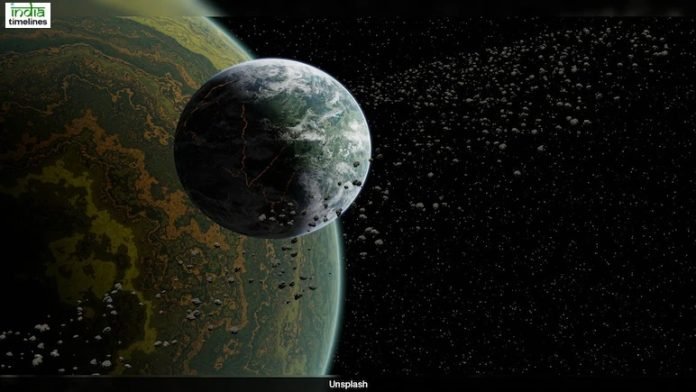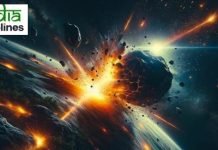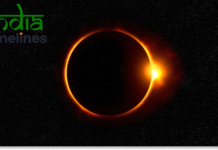
The vastness of space continues to surprise us with its mysteries, and one such intriguing phenomenon is the existence of Earth’s so-called “second moon.” While not a true satellite like our familiar Moon, this celestial body has garnered attention due to its peculiar orbital relationship with Earth. However, recent astronomical studies reveal that this “second moon” is set to disappear from our skies, not to return until 2055. This blog explores what Earth’s “second moon” is, why it’s disappearing, and what its reappearance in 2055 might mean for our understanding of celestial mechanics.
What Is Earth’s “Second Moon”?
Earth’s “second moon” is not a moon in the conventional sense but a quasi-satellite. The term refers to celestial objects that share Earth’s orbit around the Sun and exhibit a complex gravitational relationship with our planet. These objects are part of a fascinating category of near-Earth objects (NEOs) that accompany our planet on its journey through space.
Kamoʻoalewa: Earth’s Quasi-Satellite
The most notable of these quasi-satellites is 469219 Kamoʻoalewa, a small asteroid discovered in 2016 by the Pan-STARRS telescope in Hawaii. Measuring approximately 50 to 100 meters in diameter, Kamoʻoalewa is a faint and distant companion to Earth. It orbits the Sun in a pattern similar to Earth’s but appears to circle around our planet due to the gravitational interplay between the two bodies.
What sets Kamoʻoalewa apart is its remarkable orbital stability, which allows it to remain in Earth’s vicinity for extended periods. This stability has led to its informal designation as Earth’s “second moon.” However, unlike our natural Moon, Kamoʻoalewa does not revolve around Earth directly and lacks the significant influence on tides or eclipses.
Why Is Earth’s “Second Moon” Disappearing?
The disappearance of Kamoʻoalewa is not an abrupt event but a natural consequence of its orbital dynamics. Its quasi-satellite status is temporary, as it relies on a delicate balance of gravitational forces between Earth and the Sun. Over time, slight perturbations in its orbit, caused by gravitational influences from other celestial bodies and the inherent instability of quasi-satellite relationships, lead to its departure.
Orbital Mechanics at Play
Kamoʻoalewa’s orbit is slightly tilted and elongated compared to Earth’s, which causes it to drift in and out of our planet’s immediate vicinity. As its current trajectory moves it farther from Earth’s gravitational sphere of influence, the asteroid will no longer appear as a quasi-satellite. This departure will render it invisible to Earth-based observers, effectively ending its brief role as a “second moon” until it re-enters the quasi-satellite phase decades later.
The Return in 2055
Astronomers predict that Kamoʻoalewa will return to its quasi-satellite status around 2055. This cyclical behavior is characteristic of such celestial objects, as their orbits occasionally realign with Earth’s over extended periods. The asteroid’s return presents a unique opportunity for scientific study and public fascination.
Opportunities for Future Exploration
When Kamoʻoalewa reappears, advancements in space technology could allow for more detailed exploration of this enigmatic object. Missions similar to Japan’s Hayabusa2, which successfully retrieved samples from the asteroid Ryugu, could be planned to study Kamoʻoalewa’s composition, structure, and origins. Such research could provide insights into the early solar system and the formation of near-Earth objects.
Why Do Quasi-Satellites Matter?
The study of quasi-satellites like Kamoʻoalewa is not just a curiosity but an essential aspect of understanding the dynamic nature of our solar system. These objects occupy a unique niche in celestial mechanics, offering clues about the gravitational interactions that shape the movement of planets, moons, and asteroids.
Contributions to Space Science
- Understanding Orbital Dynamics: Quasi-satellites provide a natural laboratory for studying gravitational interactions and orbital stability.
- Asteroid Mining Potential: These objects are often composed of valuable minerals, making them potential candidates for future space resource utilization.
- Planetary Defense: Tracking and analyzing NEOs help in assessing potential asteroid impact risks to Earth.
- Cosmic History: The composition and trajectory of quasi-satellites offer a glimpse into the processes that formed the solar system billions of years ago.
Cultural and Philosophical Perspectives
The idea of a “second moon” has also captured the imagination of people worldwide. It reminds us of the dynamic and ever-changing nature of the cosmos, challenging our understanding of permanence and stability in space. Observing and studying such celestial phenomena can inspire a sense of wonder and curiosity, encouraging us to look beyond our immediate surroundings.
Challenges in Observing Kamoʻoalewa
Despite its intriguing nature, Kamoʻoalewa is a challenging target for observation due to its small size and faint appearance. Advanced telescopes and observational techniques are required to track its movements and gather data. The asteroid’s low brightness makes it nearly invisible to the naked eye, further emphasizing the importance of scientific efforts in uncovering its secrets.
Advances in Technology
Modern advancements, such as space-based telescopes and radar imaging, have enhanced our ability to study distant objects like Kamoʻoalewa. These tools will play a crucial role in monitoring its departure, reappearance, and any changes in its orbital behavior.
Conclusion
Earth’s “second moon,” Kamoʻoalewa, may be set to disappear for now, but its story is far from over. As it drifts away and prepares for its eventual return in 2055, this quasi-satellite remains a symbol of the intricate dance of celestial bodies in our solar system. Its temporary presence reminds us of the dynamic and interconnected nature of the cosmos, while its return promises new opportunities for exploration and discovery.































